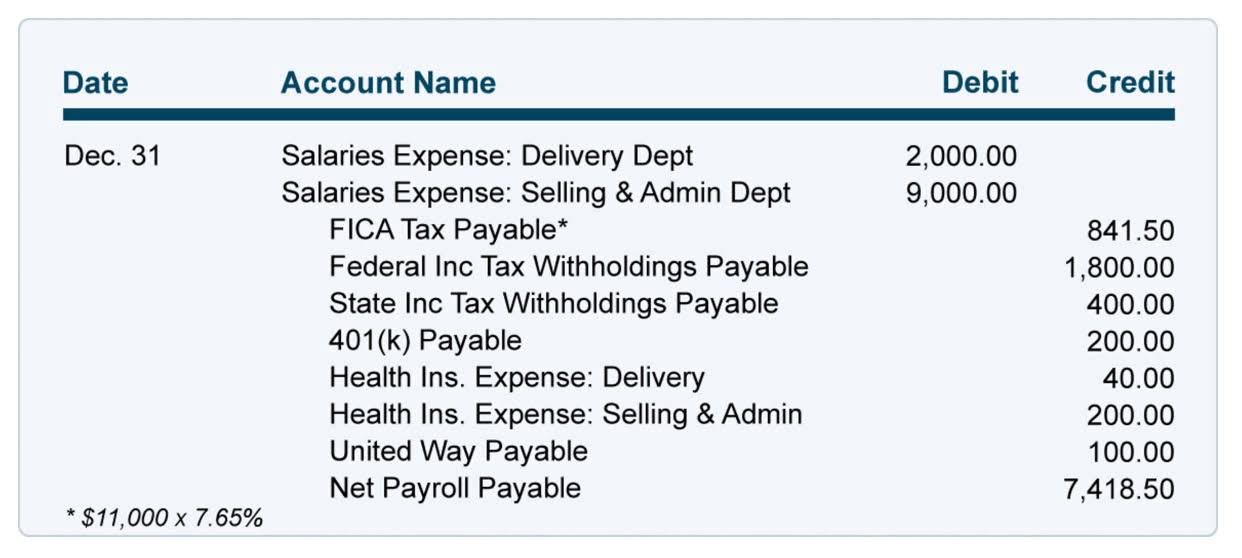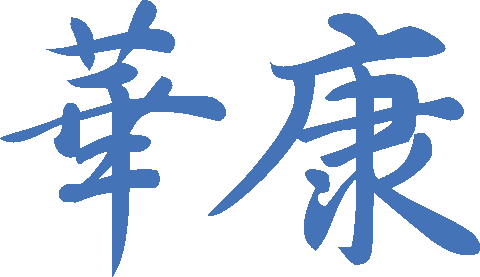Content

Now that you have calculated the activity rate for each cost pool, you can divide it up between the products you sell. Many companies use the cost of goods sold as a factor to price their products. However, this method of determining how much it costs to make a product does not directly allocate overhead to the products. There are a number of costing models used in the domain of business and Activity-Based Costing is one of them. In activity-based costing, various activities in the organization are identified and assigned with a cost. An ABC system gives management a good understanding of the cost structures of making and selling a wide range of products.
In practice, companies most frequently set rates for the entire year, although some set rates for shorter periods, such as a quarter. Assume High Challenge Company makes two products, touring bicycles and mountain bicycles. The touring bicycles product line is a high-volume line, while the mountain bicycle is a low-volume, specialized product. We are told that we place one supplier order for every batch of Product A produced.
- It can be quite difficult to maintain this extra database, since it calls for significant extra staff time for which there may not be an adequate budget.
- The worst thing you can do is to install a large and comprehensive ABC system, since it is expensive, meets with the most resistance, and is the most likely to fail over the long term.
- Product pricing is really based on the price that the market will bear, but the marketing manager should know what the cost of the product is, in order to avoid selling a product that will lose a company money on every sale.
- This provides the amount of overhead allocated to the product based on the cost pool.
- Activity-based costing is a costing method that identifies activities in an organization and assigns the cost of each activity to all products and services according to the actual consumption by each.
- If management is not going to use ABC information, an absorption costing system may be simpler to operate.
- Product‐line activities are those activities that support an entire product line but not necessarily each individual unit.
Thus, it is believed that activity-based costing helps in presenting a more realistic picture of the behavior of costs. A series of advantages come from a company’s implementation of ABC costing which go beyond the accuracy of the definition of the allocation of costs of products, services, clients and channels. With the time-driven approach, Hunter’s ABC team of analysts was able to group the three activities into a single departmental process, called inside sales order entry. The team learned that it took about 5 minutes to enter the basic order information, plus 3 minutes for each line item, and an additional 10 minutes if the order had to be expedited. If the customer were new, 15 more minutes would be required to set up the customer in the company’s computer system. So far, we have relied on an important simplifying assumption that all orders or transactions of a particular type are the same and require the same amount of time to process. It can accommodate the complexity of real-world operations by incorporating time equations, a new feature that enables the model to reflect how order and activity characteristics cause processing times to vary.
Continuing with CIMA’s definition, it continues by saying “…the latter (i.e. cost objects) use cost drivers to attach activity cost outputs”. Now, what we’ve got here within this definition from CIMA are a couple of key terms that you’ll come across time and time again when looking at the topic of Activity Based Costing. The idea is that to actually offer a product or provide a service, there’s a chain of activities which will take place for that to happen, and ABC is going to break the business down into these different activities.
Company
The cost pool for the purchasing materials activity will include costs for items such as salaries of purchasing personnel, rent for purchasing department office space, and depreciation of purchasing office equipment. The idea is that activities are required to produce products—activities such as purchasing materials, setting up machinery, assembling products, and inspecting finished products. Depending on the manufacturing systems or programs that you use, the information you need may not always be readily available. Also, the reports you use when collecting this type of data don’t always follow the traditional guidelines for accounting principles, which can make things harder to track for some teams. Cost pools – a “bucket” in which individual indirect costs that are related to a single activity are accumulated.
Next, the cost of each of these activities will be assigned only to the products that demanded the activities. In our example, Product 124 will be assigned some of the company’s costs of special engineering, special testing, and machine setup. Other products that use any of these activities will also be assigned some of their costs. Product 366 will not be assigned any cost of special engineering or special testing, and it will be assigned only a small amount of machine setup.
- At UPMC, the support and positivity of its leadership team led to more effective results.
- Since personnel expenses represent the largest single component of non-interest expense in financial institutions, these costs must also be attributed more accurately to products and customers.
- That means you can more accurately analyze your spending—and price your products.
- Therefore, more overhead costs are going into producing backpacks, than purses.
- T├╝rker, “Activity-based cost estimation in a push/pull advanced manufacturing system,” International Journal of Production Economics, vol.
- Companies rely on activity-based costing to better understand the true costs of manufacturing or producing products.
Chair one is made from red oak wood and chair two is made from white oak wood. The red oak used in the manufacturing of chair one is a direct materials cost incurred for chair one because the red oak wood used is traced only to chair one. A cost pool consists of one or more similar activities that can’t be identified easily with specific products, services, departments etc. Cost pools are used to account for the common costs of the organization.
The objective of this paper is to illustrate an application of ABC method and to compare the results of ABC with traditional costing methods. The results of the application highlight the weak points of traditional costing methods and an S-Curve obtained is used to identify the undercosted and overcosted products of the firm. In this way, various “volume” drivers such as direct labor hours, machine hours and raw material allocation of costs are used as criteria to assign overhead costs. As the tables above illustrate, with activity based costing the cost per unit decreases from $0.46 to $0.37 because the cost of the setup activity is spread over 50,000 units instead of 5,000 units. Without ABC, the cost per unit is $0.40 regardless of the number of units in each batch.
How Do You Calculate Activity
The best work-around is to design the system to require the minimum amount of additional information other than that which is already available in the general ledger. An ABC system may require data input from multiple departments, and each of those departments may have greater priorities than the ABC system. Thus, the larger the number of departments involved in the system, the greater the risk that data inputs will fail over time. This problem can be avoided by designing the system to only need information from the most supportive managers. Since there are more backpack orders than purse orders, the customer support agents will spend more time on customers who ordered backpacks, than purses. Let’s say out of 25,000 customers, 15,000 are for backpacks, and 10,000 are for purses.

Microsoft Dynamics NAV is good for smaller-sized companies.The most valuable feature of Microsoft Dynamics NAV is its simplicity of accounting and receiving reports. The solution is similar to Microsoft Excel, and that similarity is good. Prepare Product Cost Statement under traditional Absorption Costing and Activity-based Costing Method. FREE INVESTMENT BANKING COURSELearn the foundation of Investment banking, financial modeling, valuations and more. Semi Variable CostFixed and variable costs combine to form semi-variable costs. Because semi variable costs are influenced by both fixed and variable costs, they are also referred to as mixed costs. Below are the production details that have been derived from the production sheet.
It Can Be More Time
With ABC methodology, health systems see the “true cost” of care at the patient level—insight traditional costing systems can’t provide. In contrast, for the luxury product, manufacturing overhead costs based on labor hours were higher when compared to the activity-based approach. When considering all relevant activities, overhead costs in manufacturing each product are actually less than that estimated by labor hours only.
Activity-based costing has revealed that low-volume, specialized products have been the cause of greater costs than managers had realized. Gone are the days when you had Ford motor vehicles producing one particular car. As Henry Ford famously said, customers can have any car they want in any colour, as long as it’s the Model T, and it’s in black.
For example, if we want to determine the full cost of a distribution channel, we will identify advertising and warehousing costs related to that channel, but will ignore research costs, since they are related to products, not channels. Generally, the scope of an ABC project should be kept fairly narrow, https://www.bookstime.com/ to make the project easier to manage and more cost-effective. That drives the prevalence to slow processes in services and administrations, where staff time consumed per task defines a dominant portion of cost. Hence the reported application for production tasks do not appear as a favorized scenario.
Time
So, what we’re really saying is on average it costs us $475 to place a supplier order. Companies rely on activity-based costing to better understand the true costs of manufacturing or producing products.

In some cases, organizations may need to restructure teams or create new ones to foster an environment for successful ABC . Health systems that leverage the actionable insight from ABC further benefit by implementing the same, or similar, process/clinical improvement measures across other service lines. Activity-based costing traces previously untraceable costs, such as depreciation, to particular activities. Oracle E-Business Suite improves forecast accuracy, reduces costs, and increases manufacturing capacity.Oracle E-Business Suite is flexible. Product‐line activities are those activities that support an entire product line but not necessarily each individual unit. Examples of product‐line activities are engineering changes made in the assembly line, product design changes, and warehousing and storage costs for each product line.
See For Yourself How Easy Our Accounting Software Is To Use!
If we consider manufacturing businesses and how they’ve changed, the modern manufacturing environment is much different compared to the traditional manufacturing environment. Health Catalyst is a leading provider of data and analytics technology and services to healthcare organizations, committed to being the catalyst for massive, measurable, data-informed healthcare improvement.

It is up to you how you want to conduct these interviews, but the main purpose of this is to identify how the money is spread throughout the activities. For instance, if you have an employee who works in customer service as well as order processing, you can ask them how much time he/she spends on each activity.
Labor Hours Approach Vs Activity
Activity-based costing is a costing methodology that assigns the costs of resources used to activities and then assigns the costs of activities to products and services. ABC is a more accurate way to allocate costs than traditional costing methods, which typically assign costs to products and services based on estimates of the amount of labor and materials used in production.
- Top management’s commitment to trying out new management ideas and investing in new technology has been the unique feature.
- ABC focuses attention on cost drivers, the activities that cause costs to increase.
- To find the activity-based costing rate one has to add up all indirect costs that make up that specific cost pool and divide it by the total cost driver used for that specific cost pool.
- Depending on the manufacturing systems or programs that you use, the information you need may not always be readily available.
- As we have seen, the introduction of ABC has implications for the cost per unit, price and profit margin.
You can access the entire P2 course along with all of our other objective test and case study courses by purchasing our All Access membership. The Ascent is a Motley Fool service that rates and reviews essential products for your everyday money matters. James Woodruff has been a management consultant to more than 1,000 small businesses. As a senior management consultant and owner, he used his technical expertise to conduct an analysis of a company’s operational, financial and business management issues. James has been writing business and finance related topics for work.chron, bizfluent.com, smallbusiness.chron.com and e-commerce websites since 2007. He graduated from Georgia Tech with a Bachelor of Mechanical Engineering and received an MBA from Columbia University. Setting up an ABC system is time-consuming and expensive to maintain, but it provides management with valuable information that can be used to improve the efficiency of processes and increase product profit margins.
Managers can use the activity-based costing method to evaluate things like management influence, efficient processes and the overall cost of different departments. Instead of assigning an equal value to all products, you can allocate the necessary budget in each area when using activity-based costing. Some products may be costlier to produce, depending on their indirect costs. This can also help with identifying costs that apply to more than one pool of manufacturing products, which can make resources more valuable. Absorption-costing refers to equally assigning the value of overhead costs across all inventory. This accounting method doesn’t account for products that may have higher indirect costs, but activity-based costing does.
Differences Between Abc Costing And Traditional Costing Systems
If an organisation determines prices based on cost i.e. using cost-plus pricing, greater costing information will be very useful and prices will change. Activity based costing involves the identification of the factors which cause the costs of an organisation’s major activities. Support overheads are charged to products on the basis of their usage of an activity. In order to determine which overheads are linked to which cost pool, you can either make an estimate or interview your employees for more “boots on the ground” style information. As discussed earlier, value-adding activities contribute something of ‘value’ directly to the manufacture of the products or rendering of the services sold to the customer, while non-value-adding activities do not. Primary activities directly support the company’s mission while secondary activities simply support the primary activities.
ABC works best in complex environments, where there are many machines and products, and tangled processes that are not easy to sort out. Conversely, it is of less use in a streamlined environment where production processes are abbreviated, so that costs are easy to assign. In modern manufacturing systems, overhead functions include a lot of non-factory-floor activities such as product design, quality control, and production planning and customer activity based costing services. ABC is concerned with all overhead costs and so it takes management accounting beyond its ‘traditional’ factory floor boundaries. An activity is defined as a process, function, task, or step that occurs over time and generates results that the company uses to produce and sell its products and services. An activity consumes resources as it transforms its inputs into outputs, and therefore incurs a ‘cost’ every time it occurs.
![[:en]KNOWLEDGE ENHANCEMENT[:hk]能力增強[:]](https://www.white.training/wp-content/uploads/2019/08/65018157_m.jpg)
![[:en]INNOVATIVE THINKER[:hk]創新思維[:]](https://www.white.training/wp-content/uploads/2019/08/56326079_m.jpg)
![[:en]KEY TO WISDOM[:hk]知識的鑰匙[:]](https://www.white.training/wp-content/uploads/2019/08/77523364_m.jpg)
![[:en]ANALYSE PROBLEM [:hk]分析問題[:]](https://www.white.training/wp-content/uploads/2019/08/81345043_m.jpg)
![[:en]UNLEASH YOUR POTENTIAL[:hk]釋放潛能[:]](https://www.white.training/wp-content/uploads/2019/08/123324598_m.jpg)
![[:en]SKILLS EXTENSION[:hk]技能擴展[:]](https://www.white.training/wp-content/uploads/2019/08/63240671_m.jpg)
